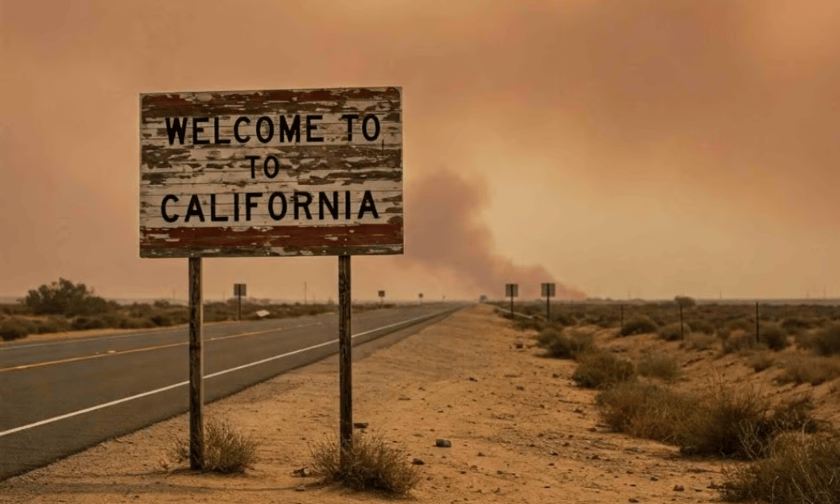

As California contends with increasingly destructive wildfires and an unraveling property insurance market, state officials are racing to shore up the last line of coverage for many businesses and homeowners.
Last week, California Insurance Commissioner Ricardo Lara approved a significant expansion of the California FAIR Plan’s commercial property coverage. Under the new rules, the insurer of last resort will be required to offer up to $20 million in coverage per building, with a maximum of $100 million per location - more than double previous limits.
The expansion is a centerpiece of Lara’s “Sustainable Insurance Strategy,” a broad effort to stabilize California’s fractured insurance market amid mounting climate-related losses. In recent years, major carriers have pulled back from insuring properties in wildfire-prone regions, citing escalating claims and regulatory constraints. The FAIR Plan - intended as a backstop for those unable to obtain traditional insurance - has ballooned in response, covering more than 350,000 properties as of early 2025, a figure that has nearly tripled over the past five years.
“This targeted FAIR Plan expansion helps meet the urgent needs of homeowners associations, affordable housing developers, farmers, builders, and business owners who are being priced out or left without coverage altogether,” Commissioner Lara said in a statement. “It is a short-term solution with long-term benefits,” he finished hopefully.
The FAIR Plan is a consortium of private insurance companies operating under state oversight. While not government-funded, it is regulated by the Department of Insurance and supported by mandatory participation from admitted carriers. Over time, it has shifted from a last resort to a vital tool for coverage in vast stretches of the state - particularly in areas like Los Angeles County, where the 2025 Palisades Fire reignited debate over the insurability of entire communities.
The newly approved coverage levels reflect the demands of a vastly changed property market. Multifamily housing projects, agricultural operations, and commercial developments have struggled to find adequate coverage at any price in high-risk zones. Industry leaders say this has impeded housing construction and economic development.
“Commissioner Lara’s action to expand commercial property coverage is a crucial step for home builders and land developers who have struggled to obtain coverage,” said Dan Dunmoyer, CEO of the California Building Industry Association. “These reforms bring us closer to a more predictable and reliable insurance marketplace.”
The policy shift also aims to reverse a dangerous trend: as more property owners are pushed onto the FAIR Plan, the system becomes financially strained and less sustainable. Expanding coverage while simultaneously working to reduce overall FAIR Plan enrollment is part of Lara’s broader approach.
That includes incentives for insurance companies to re-enter the market, such as allowing catastrophe modeling and reinsurance costs in rate-setting - controversial reforms designed to give insurers more flexibility when pricing risk.
Among the beneficiaries of the expansion are homeowners associations, which have faced double-digit premium hikes or outright cancellations in recent years. Some have been forced to raise dues or cut services, while others couldn’t meet lending requirements for refinancing due to insurance gaps.
“This modernization of the FAIR Plan is a long-overdue win for community associations,” said Stacie Donnelly of the Community Associations Institute. “With updated limits and enhanced oversight, this reform gives HOAs a path to navigate the changing insurance market.”
The agricultural sector - particularly vulnerable to wildfire damage - has also welcomed the move. “Access to adequate insurance has become a growing challenge,” said Shannon Douglass, president of the California Farm Bureau. “The increase in coverage limits and focus on financial stability offers meaningful relief.”
To accompany the expanded limits, the Department of Insurance has mandated new transparency measures for the FAIR Plan. These include publicly reporting the number of policies in high-risk areas, tracking customer service performance, and posting progress on claims handling. The department is also conducting a financial examination of the FAIR Plan, following a 2022 assessment that called for major reforms in governance and operations.
These steps build on earlier actions by Commissioner Lara, including doubling residential coverage limits to $3 million in 2019, introducing wildfire mitigation discounts, and allowing more flexible payment options for policyholders.
Despite these efforts, the road to stability remains steep. According to industry analysts, rising climate risks and decades-old insurance statutes continue to limit private market participation, even as losses mount. Nationwide, the frequency of billion-dollar disasters has surged, with NOAA reporting a record 28 such events in 2023 alone.
Lara insists his approach is about both immediate relief and long-term transformation.
“We are moving urgently but responsibly to create lasting reform,” he said. “Every part of my Sustainable Insurance Strategy is designed to deliver stability now and restore competition and choice for California consumers in the future.”
The FAIR Plan must implement the new coverage limits within 120 days, with notification to brokers expected in the coming weeks. For now, the expansion offers a temporary lifeline for those left behind in a market under siege from fire, risk, and retreat.
